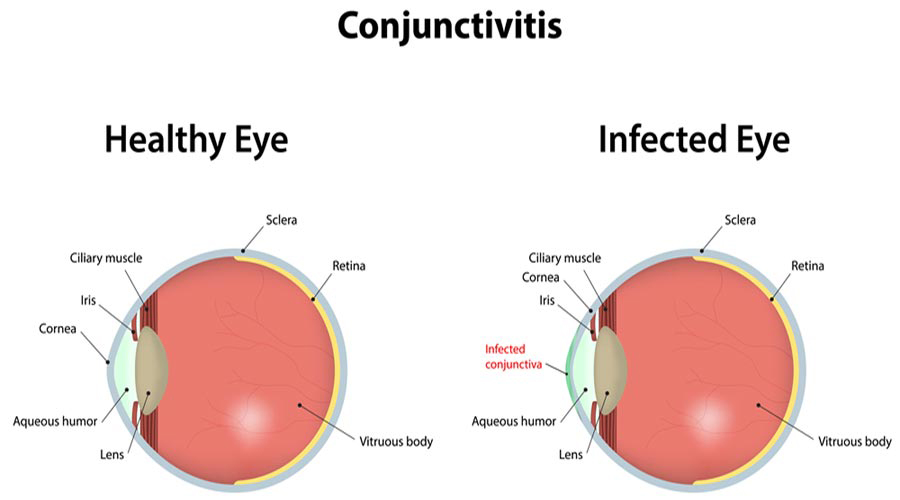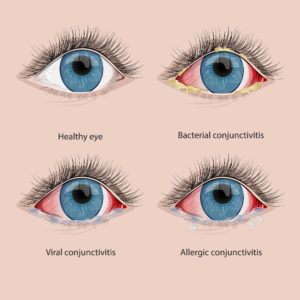Conjunctivitis
The conjunctival or conjunctival is a thin, translucent membrane that covers the anterior part of the eye and the inner surface of the eyelids. This is called conjunctivitis. The word pink eye can be applied to all types or infectious cases. Conjunctivitis may be due to microbial, viral, allergic or foreign body irritants.

Signs and symptoms
The most obvious sign of conjunctivitis is red eye. Eye redness is caused by inflammation and conjunctivitis. The eyes may also have pain or itching. The patient’s vision is usually normal or may be transient due to blurred discharge, which is usually resolved by blinking.
Types of Conjunctivitis
Types of Conjunctivitis

Causes of Conjunctivitis
Treatment of conjunctivitis
In the first place, it must be prevented. Both types of viral and bacterial conjunctivitis spread rapidly and spread to other people. The following are some of the factors that reduce the spread of the disease:
- Wash your hands frequently and avoid contact and scratching your eyes.
- Avoid sharing towels and pillows, bathing and washing utensils with others, and wash them after each use.
- Avoid sharing eye drops and cosmetics with others and changing their conjunctivitis after recovery to avoid becoming infected again.
- Never change contact lenses during the course of the illness and even after they have recovered.
In the case of viral and bacterial conjunctivitis, warm compresses may soothe the eyes.
Viral and bacterial conjunctivitis generally recover spontaneously without treatment. The use of antibiotic drops in bacterial cases accelerates its recovery and also reduces its spread to others. In certain cases, systemic antibiotics may also be needed. Occasionally due to viral conjunctivitis, inflammatory lesions in the cornea occur, which may sometimes require topical steroids.
Conjunctivitis caused by herpes should be treated with herbal remedies.
Keep windows and doors closed to reduce allergic conjunctivitis during the days when pollen is high (during the wind and spring). If you are exposed to smoke and chemicals, be in areas with good ventilation. In cases of allergic conjunctivitis, cold compresses are very soothing.
If you have papillary glandular conjunctivitis, it is usually due to the use of contact lenses. In this case, you should not use the lens for at least a while. Replacement lens type may also be useful to prevent recurrence. Giant papillary conjunctivitis may be due to prosthesis or suture tip stimulation, in which case the physician may remove the suture.
